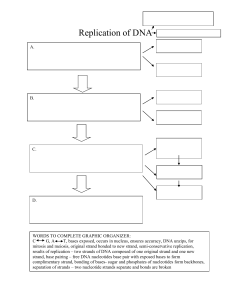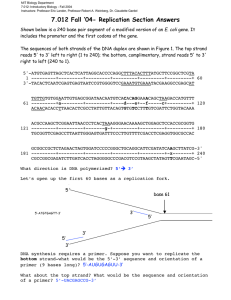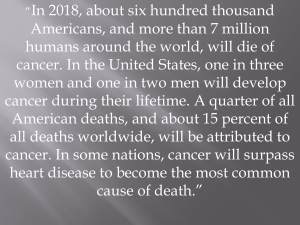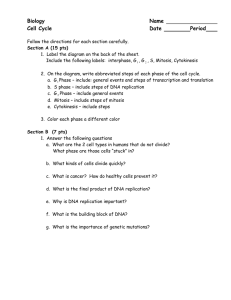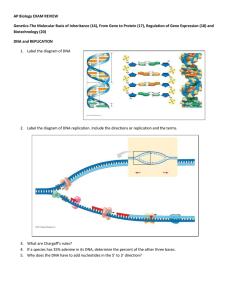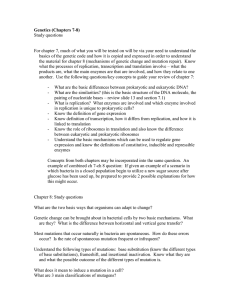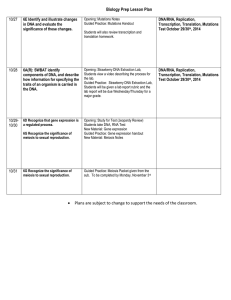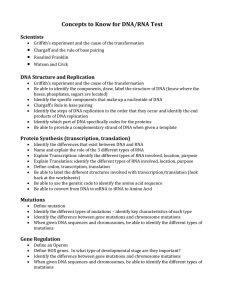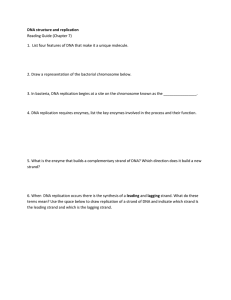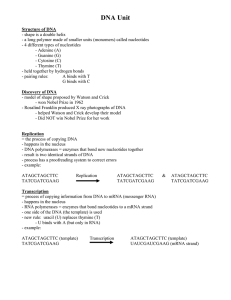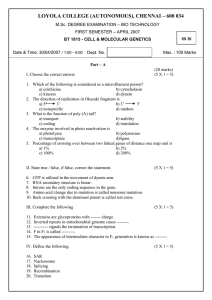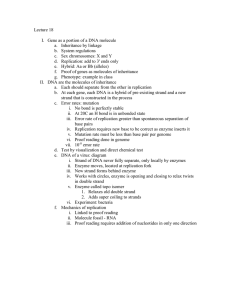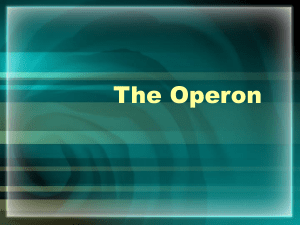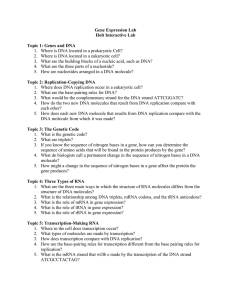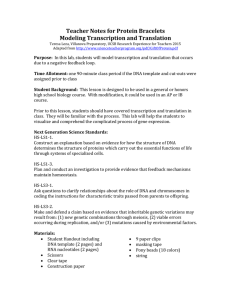Objectives for Biology 1 Chapter 25 Test
advertisement
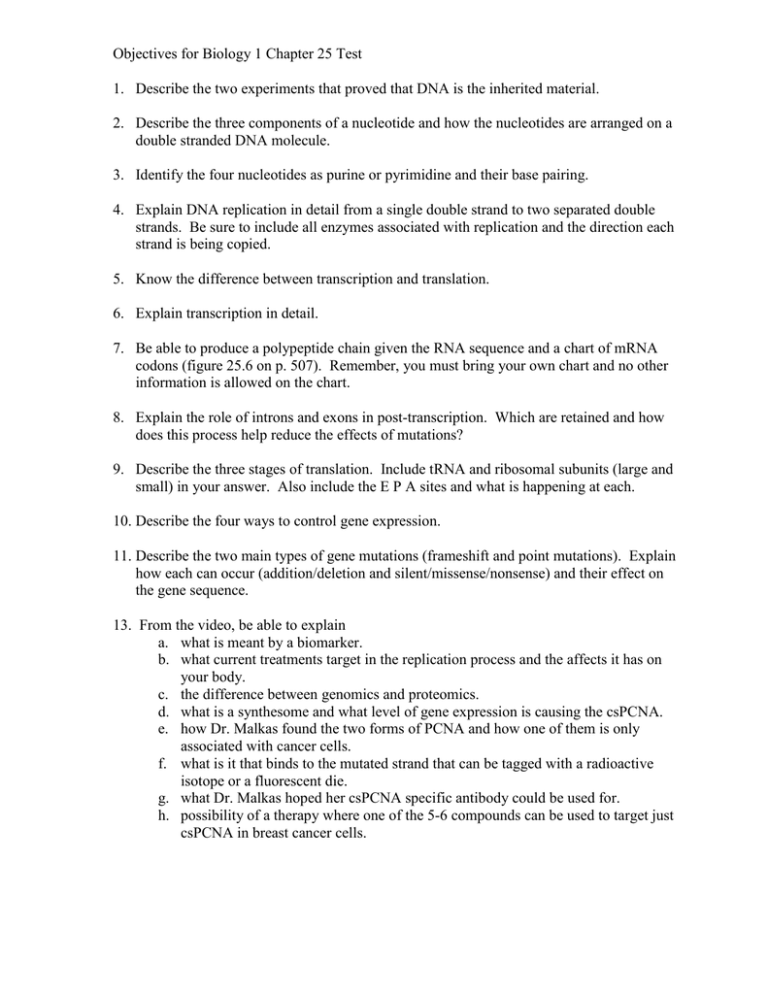
Objectives for Biology 1 Chapter 25 Test 1. Describe the two experiments that proved that DNA is the inherited material. 2. Describe the three components of a nucleotide and how the nucleotides are arranged on a double stranded DNA molecule. 3. Identify the four nucleotides as purine or pyrimidine and their base pairing. 4. Explain DNA replication in detail from a single double strand to two separated double strands. Be sure to include all enzymes associated with replication and the direction each strand is being copied. 5. Know the difference between transcription and translation. 6. Explain transcription in detail. 7. Be able to produce a polypeptide chain given the RNA sequence and a chart of mRNA codons (figure 25.6 on p. 507). Remember, you must bring your own chart and no other information is allowed on the chart. 8. Explain the role of introns and exons in post-transcription. Which are retained and how does this process help reduce the effects of mutations? 9. Describe the three stages of translation. Include tRNA and ribosomal subunits (large and small) in your answer. Also include the E P A sites and what is happening at each. 10. Describe the four ways to control gene expression. 11. Describe the two main types of gene mutations (frameshift and point mutations). Explain how each can occur (addition/deletion and silent/missense/nonsense) and their effect on the gene sequence. 13. From the video, be able to explain a. what is meant by a biomarker. b. what current treatments target in the replication process and the affects it has on your body. c. the difference between genomics and proteomics. d. what is a synthesome and what level of gene expression is causing the csPCNA. e. how Dr. Malkas found the two forms of PCNA and how one of them is only associated with cancer cells. f. what is it that binds to the mutated strand that can be tagged with a radioactive isotope or a fluorescent die. g. what Dr. Malkas hoped her csPCNA specific antibody could be used for. h. possibility of a therapy where one of the 5-6 compounds can be used to target just csPCNA in breast cancer cells.



